Faculty Research
The WCU chemistry faculty has a long and proud tradition of undergraduate and graduate research. Exciting projects span all the traditional subdisciplines of chemistry, but also include biotechnology, materials and environmental applications. For example, inorganic nanoparticles are being synthesized and characterized for their ability to illuminate cancer cells; supramolecular complexes are being developed to build molecular machines; and natural products are being modified for use in wastewater remediation.
If you are interested in undergraduate or graduate research, have a look at the research descriptions below or download this flyer to see a short description and how the research is categorized by type and application. Once you've got it narrowed down, talk to the faculty members about current opportunities in their labs.
While there is not a physics major at WCU, our physicists have active research programs that involve students. If you’re interested in physics, we encourage you to contact one of our physicists about their research!
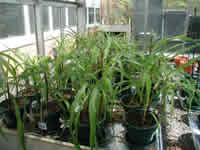
Decline of High Elevation Conifers in the Southern Appalachians
Fraser fir (Abies fraseri), which are native to the Southern Appalachians, have experienced severe decline over the last forty years, primarily due to attack by an exotic insect, the balsam woolly adelgid. We have been studying differences in the chemical composition of the seeds and foliage of these trees to attempt to characterize chemical differences between trees that make individuals or stands more resistant to attack by this pest. The native habitat of these trees are scenic areas such as the Great Smoky Mountains National Park and the Blue Ridge Parkway; this species also is important as a Christmas tree. Because tourism and Christmas tree farms are significant industries in this region, the decline of the Fraser fir is potentially an economic loss to this region.
Phytoremediation at Barber Orchard, NC: Barber Orchard is a 500-acre residential housing development located approximately five miles west of Waynesville, NC and 20 miles from the WCU campus. It is currently listed as a Superfund site by the U.S. EPA because of high soil concentration levels of arsenic, lead, and organo-pesticides. The contamination was caused by pesticide use when the land was used as an apple orchard throughout most of the twentieth century. The EPA is currently conducting a remedial investigation/feasibility study to consider future action to be taken at Barber Orchard.
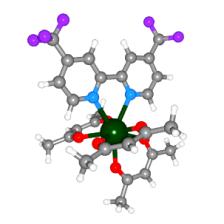
Rare Earth Nanomaterials
Research efforts in Dr. De Silva’s laboratory are focused on the synthesis, characterization
and surface modification of novel lanthanide-based complexes and nanomaterials with
improved optical and magnetic properties. The research is focused towards developing
synthetic methods to form advanced materials for display and biomedical imaging applications.
Lanthanide-based nanomaterials have gained resent interest in cellular assays and
biomedical imaging.
We are exploring the avenues to design biocompatible and selective cancer-targeting agents using lanthanide metals. In addition, we are interested in carrying out computational modeling studies of lanthanide-based materials to guide the experimental design.
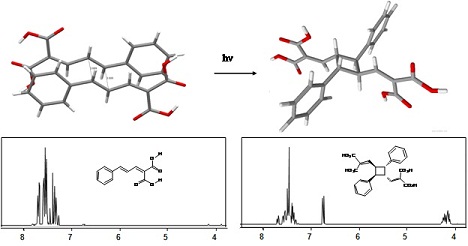
Supramolecular, Material science
The research interests of the Dinkelmeyer group include organic synthesis, supramolecular chemistry, organic solid state chemistry and material science. The macroscopic properties that a material possesses depend greatly on how its component molecules are arranged within the material. The aim of supramolecular is to control the self assembly of organic molecules within materials using weak directional intermolecular forces such as H-bonding, metal-ligand bonding, dipole-dipole interactions etc.
We are particularly interested in how H-bonding functional groups influence molecular packing and how this packing affects the solid state reactivity of molecules within organic crystals. Our work has focused mainly on molecules containing conjugated dienes. We have been successful in creating crystalline architectures where these molecules undergo a variety of photochemical transformations which include 2+2 dimerizations, polymerizations and cis/trans isomerizations. The mechanism and kinetics of these transformations are studied using single crystal X-ray diffraction, X-ray powder diffraction, FTIR, UV-VIS and NMR. Other current research interests include the synthesis of MOFs and discrete metal-ligand assemblies in solution.
Research in the Duranty group is centered on two main thrusts: (#1) studying thermodynamic processes occurring in small droplets levitated via a standing acoustic wave; and (#2) additive manufacturing of renewable materials such as cellulose enabled by the solvation capabilities of tailored room temperature ionic liquids. We are using acoustic levitation to isolate small-volume samples to study thermodynamic processes occurring within droplets using thermographic infrared (IR) cameras. These IR cameras are able to directly measure the surface temperature of a levitating droplet, which is a good representation of the average droplet temperature due to the rapid heat transport within the small volume. This capability has allowed us to monitor the extent of chemical reactions such as strong acid/strong base neutralization reactions and the photo-initiated polymerization of methyl methacrylate in situ while levitating. Additionally, we have used our combined levitation/IR technique to study the evaporation mechanism of a variety of organic solvents as well as the radio frequency (RF) signal absorption of gold nanoparticles suspended in a hydrophobic room-temperature ionic liquid. The methodology developed in the Duranty lab offers a wide array of possibilities for studying the behavior of isolate small-volumes potentially impacting a variety of field such as small-volume chemistry, aerosols, coatings, atmospheric chemistry and even pharmaceutics.
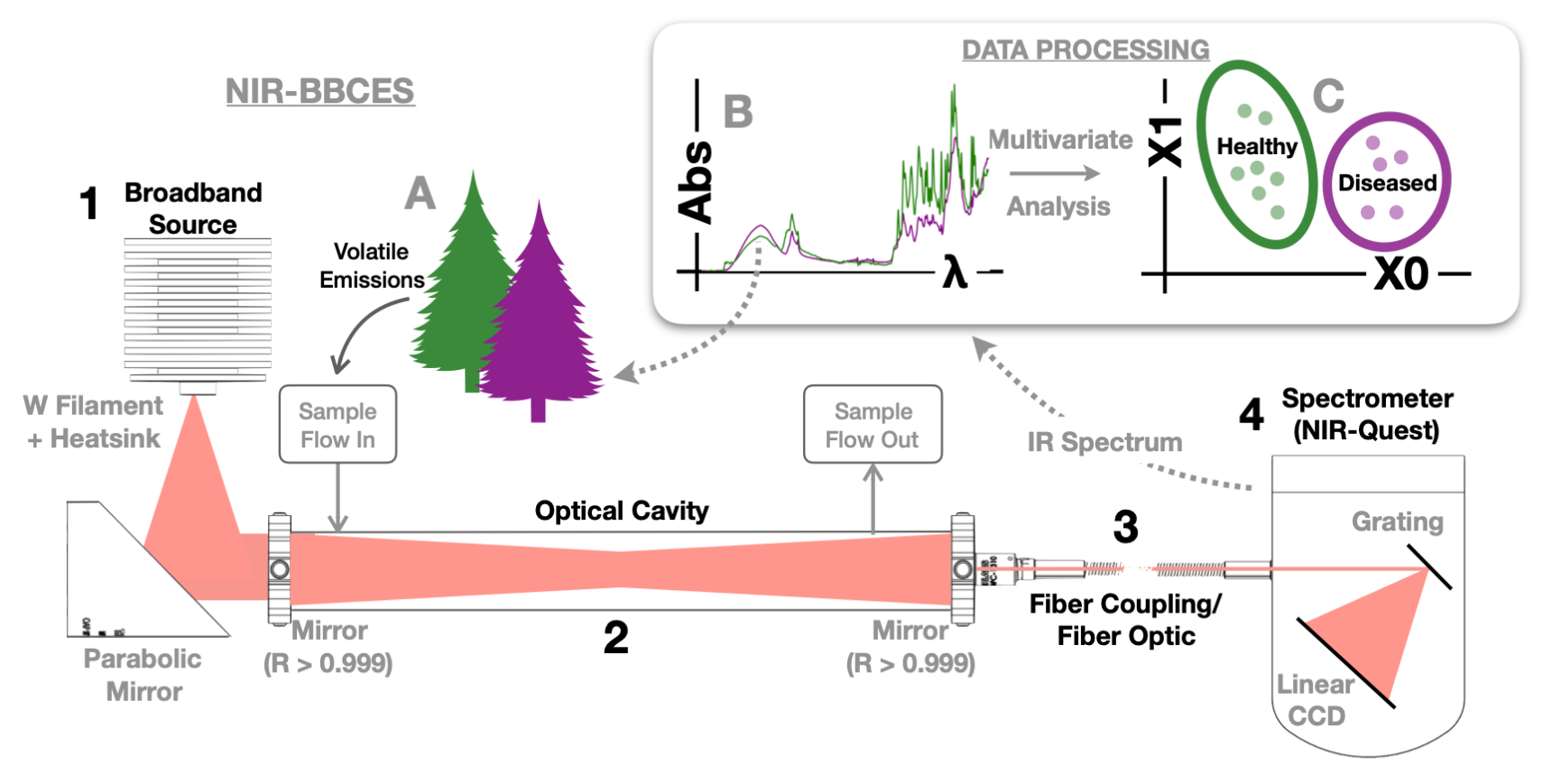
Environmental Analysis
Research in Dr. Fischer's lab blends chemistry, environmental science, and engineering to develop instruments and methods that help us understand the environment and our effects on it. This research focuses on two techniques in particular: (1) photoacoustic spectroscopy and (2) cavity enhanced spectroscopy. Photoacoustic spectroscopy (PAS) is a sensitive method of measuring light absorption, and we build low-cost, multi-wavelength photoacoustic spectrometers to study atmospheric aerosols and gases. Cavity enhanced spectroscopy (CES) describes a family of techniques (including cavity ringdown) that are used to measure light extinction (the sum of scattering and absorption). We use CES in conjunction with PAS to understand atmospheric aerosols. In addition, we are developing a field-portable infrared CES which will acquire spectral signatures of trace volatile emissions from plant samples, agricultural samples, and forensic samples and then apply chemometric methods to differentiate samples.
We also use a variety of commercial instruments (e.g. GC-MS, UV-vis, ICP-MS, FT-IR, SEM) and low-cost sensors in conjunction with the techniques above. A detailed list of current projects can be viewed at https://alphonse.github.io/projects.
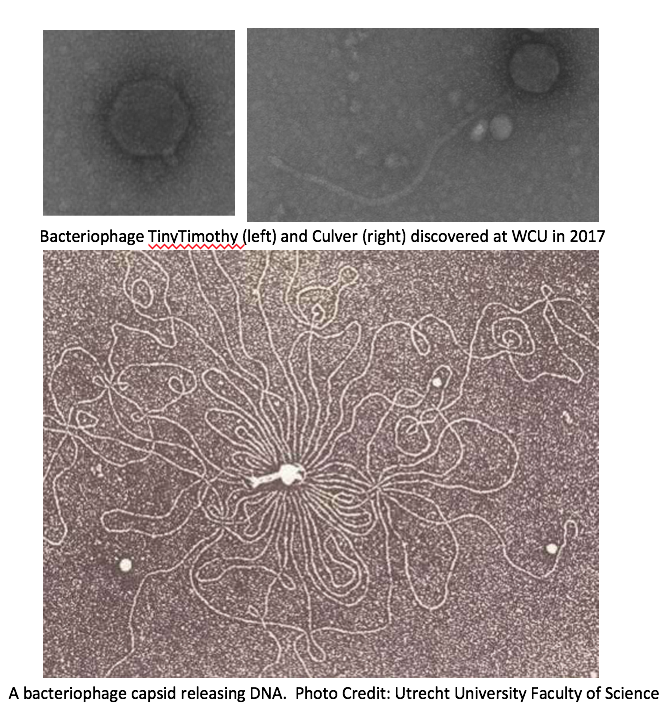
Biochemistry/Molecular Biology
Adrift in the environment a bacteriophage virion (an infectious viral particle) can be thought of as little more than an elaborate protein container of nucleic acid polymers. However, when a bacteriophage comes into contact with a susceptible cell it can initiate infection by binding to cell receptors and injecting its genetic material (usually double-stranded DNA) inside the cell. The bacteriophage’s genetic material then reprograms the bacterial cell’s transcription and translation machinery to become a virus factory. My research focuses on proteins that are expressed by bacteriophages that regulate gene transcription and defense against other viruses. My laboratory is also interested in bacteriophage discovery and genomics. Techniques used in my laboratory include in vitro/in vivo protein expression, cell culture, genetic engineering, next-generation sequencing, and bioinformatics.
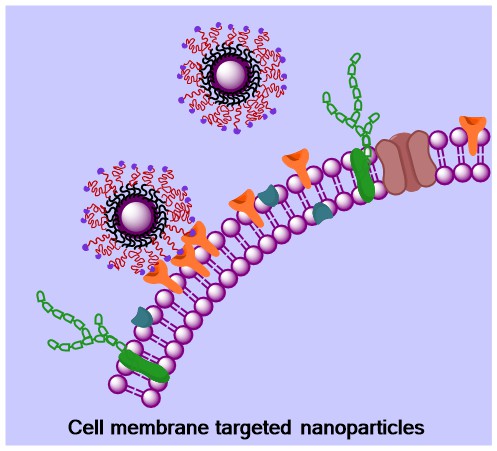
Biological Applications of Engineered Nanoparticles
Research in Dr. Hikkaduwa Koralege’s lab focuses on the use of engineered nanoparticles as versatile tools in biomedical applications, particularly in the areas of biomedical imaging and targeted delivery of therapeutics. Magnetic resonance imaging (MRI) has become an essential tool in biological imaging and is used increasingly for the evaluation of a variety of diseases. Superparamagnetic iron oxide complexes are excellent MRI contrasting agents. However, their half-life in the circulatory system is short because of the opsonization process which renders them to be recognized by the reticuloendothelial system. Our goal is to develop an innovative strategy to prolong the residence time of magnetic iron oxide-based MRI contrast agents in blood.
Another area of focus is the development of multilayered and multifunctional nanoparticles that are assembled via layer-by-layer (LbL) technique to explore as novel systems for therapeutic delivery. LbL is a facile technique that is adaptable to a wide range of biologically relevant materials and therapeutics. By altering the layer order and deign of layer material our goal is to explore the effects on efficiency and versatility of these nanoparticles.
Our lab also explores the potential health and environmental risks of nanomaterials. We are mainly interested in colloidal suspensions of fullerenes.
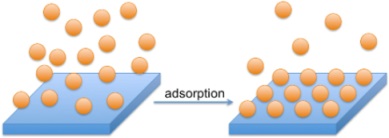
Binding Interactions
As a physical chemist, my research focuses on understanding why and how molecules behave the way they do. One aspect of particular interest for our group is exploring adsorption mechanisms. These are the ways in which molecules bind to surfaces. One system we are currently studying is the binding of heavy metal ions to natural products for the purpose of removing pollutants from water systems. We also explore the binding of nanoparticles to a variety of surfaces such as cotton for antimicrobial uses.
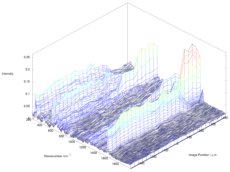
Measurement Science
Research in Dr. Huffman's lab focuses on three different areas. A major focus is the development of non-destructive methods of measurement of culturally and historically important objects using Raman and infrared spectroscopy. Currently, these measurement methods are optimized for the analysis of cultural and historical objects, such as paintings and historical textiles. Our goal is to provide a powerful suite of tools that can be used by museum curators and conservation scientists for the characterization of these objects. We are currently involved in collaborations with WCU's Mountain Heritage Center and the Fine Art Museum.
Another area of focus are the development of small portable/affordable microfluidic sensors for the quantitative determination of environmental, industrial, and forensic importance.
Finally, the Huffman lab specializes in the field of chemometrics, the development of computer algorithms that are used to extract chemical information about a sample or set of samples from raw data sets that are too large to be analyzed by hand. Often the other two research areas are combined with these advanced data analysis projects.

Using Weak Interactions to Build Molecular Systems
Some biological systems, such as the enzyme ATP Synthase, are complex, highly-organized
collections of organic molecules that behave like molecular machines to perform specific
tasks. The goal of our research is to design and build simple molecular machines and
study how they operate in order to eventually prepare systems of molecular machines
that perform a useful task. We are making use of a weak interactions called dative-bonding
to help us assemble our target molecular systems. Dative-bonding consists of a covalent
bond between two atoms in which both electrons shared in the bond come from the same
atom.
In particular, we use dative-bond interactions between Lewis acids (like boron atoms)
and Lewis bases (like nitrogen atoms) to assemble molecules in which the nitrogen
atom contributes a pair of electrons to form the bond between nitrogen and boron.
Our research focuses on forensic examination of automotive paints. We develop new analytical methods to facilitate the vehicle identification process from paint samples found at hit and run accidents using spectroscopic and data analysis techniques.
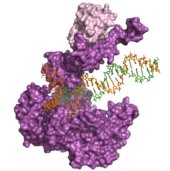
Protein Interactions and Communication
Research in the Wallen laboratory is focused on understanding how multiple proteins communicate at the molecular level in order to carry out complex biochemical reactions. Specifically, our research group is interested in how DNA polymerases communicate with other enzymes during DNA replication in order to accurately copy both strands of DNA. We are focusing our research efforts on the DNA replication systems of bacteriophages (viruses that infect bacteria) as well as in the mitochondria of the pathogenic yeast Cryptococcus neoformans. A variety of biochemical methods, including protein expression and purification, equilibrium binding assays, enzyme kinetics, and in vivo complementation assays are utilized to further understand how these enzymes interact to carefully coordinate the process of DNA replication.
